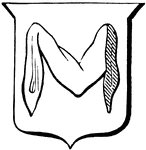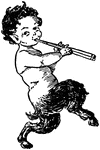
Pan
Pan in Greek religion and mythology, is the companion of the nymphs, god of shepherds and flocks, of…

Sailors Waving Their Hats while Interlocking Arms
An illustration of three sailors waving their hats while walking away with interlocking arms.
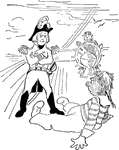
Captain with Crossed Arms Looking at Man Sitting
An illustration of a captain of a ship looking at a man sitting on the deck.

Common Kusimanse
The Common Kusimanse (Crossarchus obscurus), also known as the Long-nosed Kusimanse, is a small, diurnal…
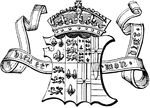
Marshaling
Marshalling is the art of correctly arranging armorial bearings. Two or more coats of arms are often…
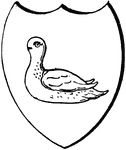
Martlet
A martlet is a heraldic charge depicting a mythical bird, similar in appearance to the swallow, but…

Ovenbird
"Golden-crowned Wagtail Warbler. Golden-crowned Accentor. Golden-crowned Thrush. Oven-bird. Seiurus…
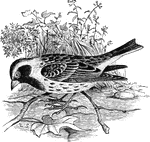
Lapland Longspur
"Centrophanes lapponicus. Lapland Longspur. Whole head, throat and breast jet-black, bordered with buffy…
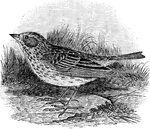
Common Savanna Sparrow
"Passercules s. savana. Common Savanna Sparrow. Thickly streaked everywhere above, on sides, and across…
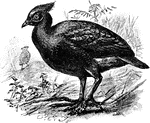
Mound-builders
The megapodes, also known as incubator birds or mound-builders, are stocky, medium-large chicken-like…

Plan of St Paul's Cathedral, London, 1675–1710
This is a plan of the St Paul's Cathedral in London, England. It is an example of English Renaissance…

Common Cuckoo
This Old World bird's plumage is gray or brown. They have a long tail, strong legs, and a slim body.
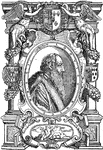
Venetian Print
This Venetian print was created in 1562 by an unknown artist. It is a drawing of an old man's side profile,…
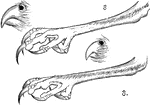
The Beaks and Claws of a Burrowing Owl
"Speotyto. Burrowing Owls. tarsi long, about twice as long as the middle toe without its claw, very…

Burrowing Owl
"Speotyto cunicularia hypogae'a. Burrowing Owl. Adult: Above, dull grayish-brown, profusely spotted…

Sharp-tailed Grouse
"Pediaecetes phasianellus Columbianus. Common Sharp-tailed Grouse. Upper parts closely and pretty evenly…

Four-toed Plover Bill and Hind Toe
"Squatarola. Four-toed Plover. A small but distinct hind toe, contrary to the rule in this family. Tail…

Kildeer Plover
"Aegialites vociferus. Kildeer Plover. Above, grayish-brown, with an olive shade, and in high plumage…

Avocets Head and Foot
"Another small family, characterized by the extreme length of the slender legs, and the extreme slenderness…
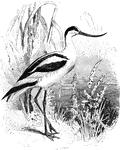
Avocets
"Recurvirostra. Avocets. Bell slender, more or less recurved, then the upper mandible hooked at the…

Stilt
"Himantopus. Stilts. Bill extremely slender, but not flattened, nor turned up, nor hooked; longer than…

Black-necked Stilt
"Stilt. Long-shanks. Lawyer. Adult. Mantle, constituted by the interscapulars, scapulars, and wings…

American Woodcock Head
"Philohela. American Woodcock. First three primaries emarginate, attenuate and falcate, abruptly shorter…

Marbled Godwit
"Limosa fedoa. Great Marbled Godwit. Marlin. Feathers not extending on side of lower mandible to a point…

Willet Head
"Symphemia semipalmata. Semipalmated Tattler. Willet. Adult in summer: Upper parts ashy, confoundedly…

Willets
"Symphemia semipalmata. Semipalmated Tattler. Willet. Adult in summer: Upper parts ashy, confoundedly…

Greater Yello-shanks
"Totanus melanoleucus. Greater Tell-tale. Greater Yellow-shanks. Long-legged Tattler. Stone-snipe. Bill…

Solitary Sandpiper
"Rhyacophilus solitarius. Solitary Tattler. American Green Sandpiper. Solitary Sandpiper. Above, dark…

Ruff
"Machetes pugnax. Ruff. Reeve. Combatant. Gambetta. Varied above with black, brown, buff and chestnut,…

Buff-breasted Sandpiper
"Tryngites rufescens. Buff-breasted Sandpiper. Above, brownish-black with a greenish gloss, every feather…
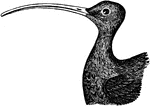
long-billed Curlew
"Numenius longirostris. Long-billed Curlew. Sickle-bill. Plumage very similar to that of the Godwit,…
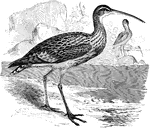
Eurasian Curlew
"Numenius arquatus. Eurasian Curlew. European Curlew. Bill of very variably length, always longer than…
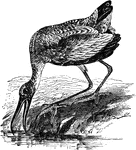
Wood Ibis
"Tantalops loculator. American Wood Stork. Wood Ibis. Colorado Turkey. Plumage white, the wing-quills,…
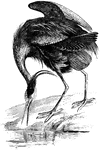
Great Blue Heron
"Ardea herodias. Great Blue Heron. Of large size, and varied dark colors, not dichromatic. Back without…

Night Heron
"Nyctiardea grisea naevia. Black-crowned Night Heron. Qua-bird. Squawk. Crown, scapulars and interscapulars…
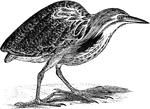
American Bittern
"Botaurus mugitans. American Bittern. Indian Hen. Stake-driver. Bog-Bull. Plumage of the upper parts…

American Flamingo
"Phoinikopteros ruber. American Red Flamingo. Adult: Plumage scarlet, the primaries and most of the…

Double-crested Cormorant
"Phalacrocorax dilophus. Double-crested Cormorant. Tail of 12 feathers. Gular sac convex behind. No…

White-headed Gull Head
"Larus heermanni. White-headed Gull. Bill shorter than head or tarsus, rather slender, moderately compressed,…
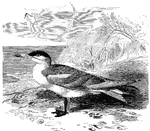
Caspian Tern
"Sterna (T.) caspia. Caspian Tern. Imperial Tern. Bill dark vermilion red, growing and somewhat "diaphanous"…

Cathedral of Sienna
The Cathedral of Siena is a Roman Catholic Marian church located in Siena, central Italy. A medieval…

Least Auks
"Simorhynchus pusillus. Least Auk. Knob-nosed Auk. Bill small and simple, but stout for its length,…

Zange Triangle
The Zange triangle is a modified triangle ruler, where one of the legs is longer making the hypotenuse…
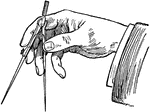
Divider Holding Position
For better control of the divider, hold the divider with the thumb and the index finger on the outside…
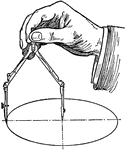
Drawing Large Circles with Compass
"Circles up to perhaps three inches in diameter may be drawn with the legs straight but for larger sizes…

Reclining Chair
A chair is a raised surface used to sit on, commonly for use by one person. Chairs often have the seat…
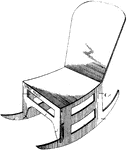
Curved Band Rocking Chair
A rocking chair is a type of chair with two curved bands of wood attached to the bottom of the legs.…

Automatic Fan Attachment for Chairs
This chair is composed of a raised surface used to sit on, commonly for use by one person. These chairs…
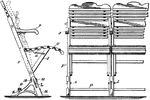
Side View of a Chair
A chair is a raised surface used to sit on, commonly for use by one person. Chairs often have the seat…

Intrigue Design Table
A table is an item of furniture comprising an open, flat surface supported by a base or legs. It may…

Suspended Pantograph
An illustration of a suspended pantograph has metal arms to resize images accurately in engineering…

Dihedral Board Aeroplane
A dihedral board on an aeroplane, or airplane, for stability. The boards are raised on short legs over…
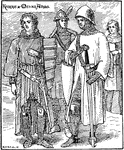
Fourteenth Century Knight and Men at Arms
An illustration of a knight and three men at arms wearing iron armors during the fourteenth century.
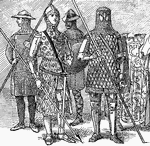
Men at Arms Wearing Armor
An illustration of men at arms wearing iron body armor. The illustration shows armors varied by wealth…
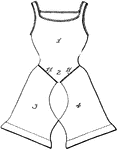
Union Suit
A union suit is a type of one-piece long underwear. These are traditionally made from red flannel with…
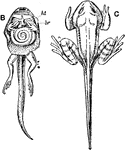
Inside and Outside View of Tadpole During Metamorphosis
The illustration is showing both inside and outside view of the tadpole. The left inside view shows…

Display Rack for Mattresses
This display rack is commonly used in stores where a vast variety of mattresses are sold. This particular…

Micrometer Calipers
An instrument, usually resembling a pair of dividers or compasses with curved legs, for measuring the…

Tool Tong
A grasping device consisting of two arms that are joined, often at one end, as by a pivot or a scissorlike…
